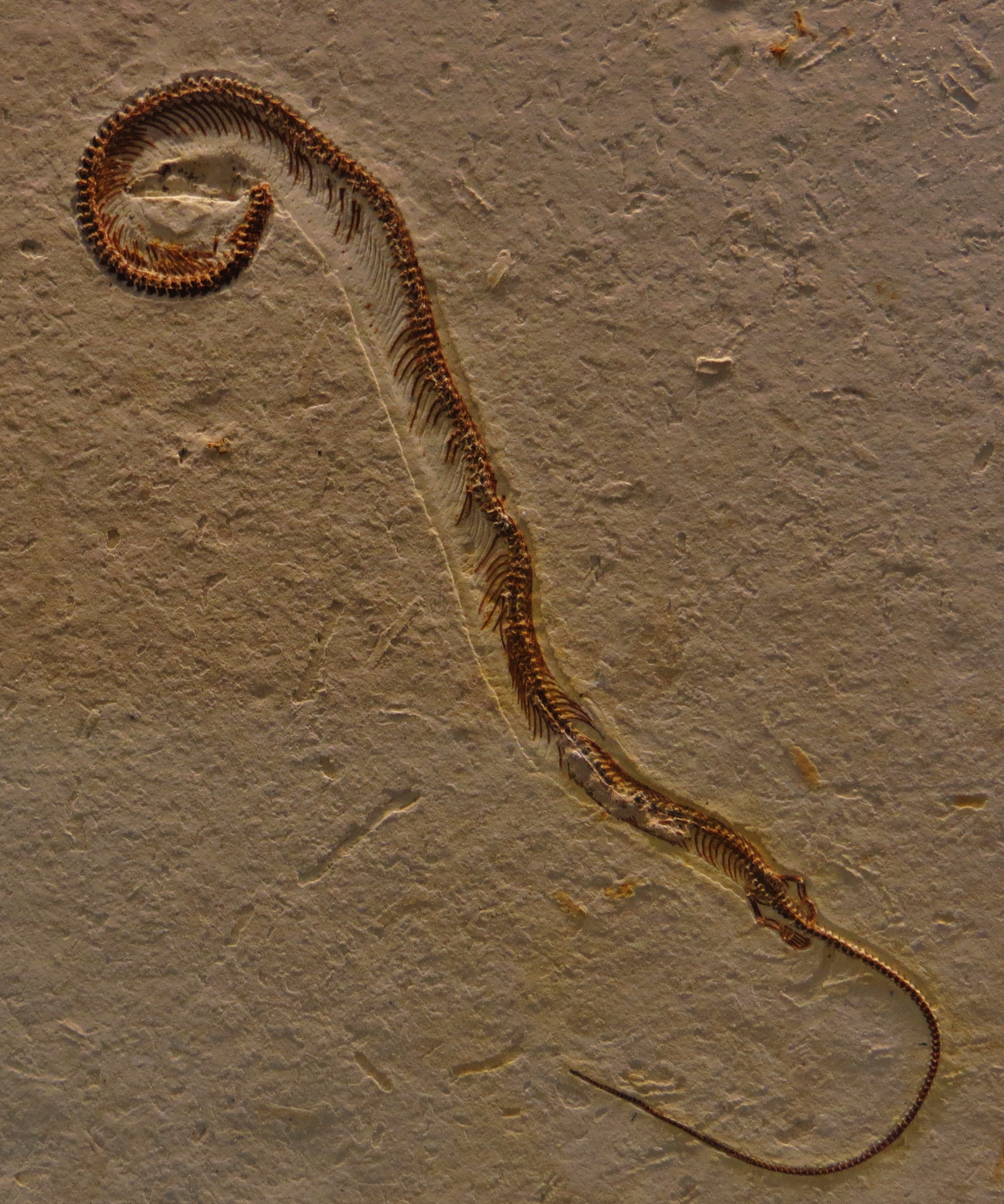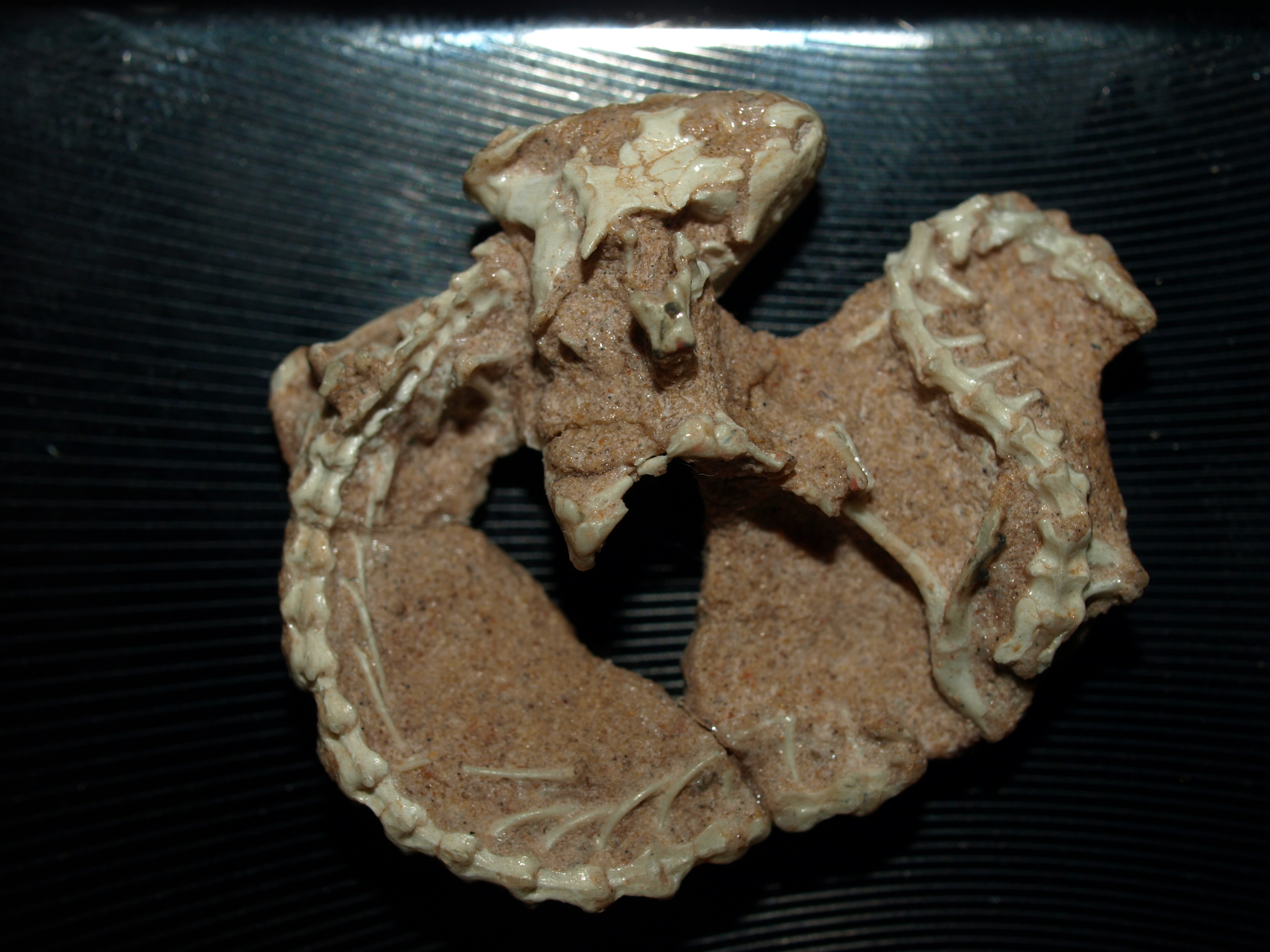|
Lepidosauriformes
Lepidosauromorpha (in PhyloCode known as ''Pan-Lepidosauria'') is a group of reptiles comprising all diapsids closer to lizards than to archosaurs (which include crocodiles and birds). The only living sub-group is the Lepidosauria, which contains two subdivisions, Squamata, which contains lizards and snakes, and Rhynchocephalia, the only extant species of which is the tuatara. Lepidosauromorphs are distinguishable from archosauromorphs (reptiles closer to archosaurs) by their primitive sprawling gait (allowing for the same sinusoidal trunk and tail movement seen in fish), the sliding "joint" between the coracoids and the sternum (for a longer stride), and their pleurodont dentition. In contrast, Archosauromorphs possess a parasagittal gait, a reduction in their dermal girdle, a reduction and/or loss of the sternum, and a more thecodont dentition. Living lepidosauromorphs have retained an ectothermic (" cold blooded") metabolism, unlike the ancestral condition in archosauromorph ... [...More Info...] [...Related Items...] OR: [Wikipedia] [Google] [Baidu] |
Lepidosauria
The Lepidosauria (, from Greek meaning ''scaled lizards'') is a subclass or superorder of reptiles, containing the orders Squamata and Rhynchocephalia. Squamata includes snakes, lizards, and amphisbaenians. Squamata contains over 9,000 species, making it by far the most species-rich and diverse order of reptiles in the present day. Rhynchocephalia was a formerly widespread and diverse group of reptiles in the Mesozoic Era. However, it is represented by only one living species: the tuatara (''Sphenodon punctatus),'' a superficially lizard-like reptile native to New Zealand. Lepidosauria is a monophyletic group (i.e. a clade), containing all descendants of the last common ancestor of squamates and rhynchocephalians. Lepidosaurs can be distinguished from other reptiles via several traits, such as large keratinous scales which may overlap one another. Purely in the context of modern taxa, Lepidosauria can be considered the sister taxon to Archosauria, which includes Aves (birds ... [...More Info...] [...Related Items...] OR: [Wikipedia] [Google] [Baidu] |
Early Triassic
The Early Triassic is the first of three epochs of the Triassic Period of the geologic timescale. It spans the time between Ma and Ma (million years ago). Rocks from this epoch are collectively known as the Lower Triassic Series, which is a unit in chronostratigraphy. The Early Triassic is the oldest epoch of the Mesozoic Era. It is preceded by the Lopingian Epoch (late Permian, Paleozoic Era) and followed by the Middle Triassic Epoch. The Early Triassic is divided into the Induan and Olenekian ages. The Induan is subdivided into the Griesbachian and Dienerian subages and the Olenekian is subdivided into the Smithian and Spathian subages. The Lower Triassic series is coeval with the Scythian Stage, which is today not included in the official timescales but can be found in older literature. In Europe, most of the Lower Triassic is composed of Buntsandstein, a lithostratigraphic unit of continental red beds. The Early Triassic and partly also the Middle Triassic ... [...More Info...] [...Related Items...] OR: [Wikipedia] [Google] [Baidu] |
Lacertulus
''Lacertulus'' is an extinct genus of lizard-like reptile, possibly a lepidosauromorph, from the Karoo Supergroup of South Africa. It contains a single species, ''Lacertulus bipes'', which is based on a small articulated skeleton stored in the Transvaal Museum in Pretoria. The origin and locality of the specimen is unknown, though it is embedded in a greenish-gray siltstone similar to some sediments from the Late Permian ''Daptocephalus'' Assemblage Zone. The skeleton is mostly complete apart from the distal part of the tail, but erosion and improper preparation has damaged the skull and parts of the torso. Though originally described as a lepidosaur, poor preservation has lent doubt to this conclusion. ''Lacertulus'' is notable for its small size (around 5 cm or 2.0 inches in snout-vent length) and proportionally small forelimbs relative to the large and well-ossified hindlimbs. The short humerus in particular suggests that it was capable of some degree of bipedal locomotion wh ... [...More Info...] [...Related Items...] OR: [Wikipedia] [Google] [Baidu] |
Jacques Gauthier
Jacques Armand Gauthier (born June 7, 1948 in New York City) is an American vertebrate paleontologist, comparative morphologist, and systematist, and one of the founders of the use of cladistics in biology. Life and career Gauthier is the son of Edward Paul Gauthier and Patricia Marie Grogan. He received a B.S. degree in Zoology at San Diego State University in 1973, a Masters of Biological Science at the same institute in 1980, and a PhD in Paleontology from the University of California, Berkeley, in 1984. Currently he is a Professor of Geology and Geophysics and Ecology and Evolutionary Biology and Curator of Vertebrate Paleontology and Vertebrate Zoology at Yale University. His master's thesis, the content of which was published in 1982, is a classic work on the paleontology and phylogeny of the lizard clade Anguimorpha that remains a core reference for morphological research on Xenosauridae and Anguidae in particular. His PhD thesis constituted the first major cladist ... [...More Info...] [...Related Items...] OR: [Wikipedia] [Google] [Baidu] |
Ankylopoda
Ankylopoda was a proposed clade that hypothetically contains turtles and lepidosaurs (tuatara, lizards and snakes) and their fossil relatives. This clade is supported based on microRNAs as well as the fossil record. However, it was strongly contradicted by molecular evidence which supports Archelosauria. Classification The cladogram below follows the most likely result found by another analysis of turtle relationships, this one using only fossil evidence, published by Rainer Schoch and Hans-Dieter Sues in 2015. This study found ''Eunotosaurus'' to be an actual early stem-turtle, though other versions of the analysis found weak support for it as a parareptile Parareptilia ("at the side of reptiles") is a subclass or clade of basal sauropsids (reptiles), typically considered the sister taxon to Eureptilia (the group that likely contains all living reptiles and birds). Parareptiles first arose near the .... See also * Archelosauria, an alternative clade that places turtl ... [...More Info...] [...Related Items...] OR: [Wikipedia] [Google] [Baidu] |
Squamata
Squamata (, Latin ''squamatus'', 'scaly, having scales') is the largest order of reptiles, comprising lizards, snakes, and amphisbaenians (worm lizards), which are collectively known as squamates or scaled reptiles. With over 10,900 species, it is also the second-largest order of extant (living) vertebrates, after the perciform fish. Members of the order are distinguished by their skins, which bear horny scales or shields, and must periodically engage in molting. They also possess movable quadrate bones, making possible movement of the upper jaw relative to the neurocranium. This is particularly visible in snakes, which are able to open their mouths very wide to accommodate comparatively large prey. Squamata is the most variably sized order of reptiles, ranging from the dwarf gecko (''Sphaerodactylus ariasae'') to the Reticulated python (''Malayopython reticulatus'') and the now- extinct mosasaurs, which reached lengths over . Among other reptiles, squamates are most ... [...More Info...] [...Related Items...] OR: [Wikipedia] [Google] [Baidu] |
Rhynchocephalia
Rhynchocephalia (; ) is an order of lizard-like reptiles that includes only one living species, the tuatara (''Sphenodon punctatus'') of New Zealand. Despite its current lack of diversity, during the Mesozoic rhynchocephalians were a diverse group including a wide array of morphologically distinct forms. The oldest record of the group is dated to the Middle Triassic around 238 to 240 million years ago, and they had achieved a worldwide distribution by the Early Jurassic. Most rhynchocephalians belong to the group Sphenodontia ('wedge-teeth'). Their closest living relatives are lizards and snakes in the order Squamata, with the two orders being grouped together in the superorder Lepidosauria. Many of the niches occupied by lizards today were held by sphenodontians during the Triassic and Jurassic, although lizard diversity began to overtake sphenodontian diversity in the Cretaceous, and they had disappeared almost entirely by the beginning of the Cenozoic. While the modern tuat ... [...More Info...] [...Related Items...] OR: [Wikipedia] [Google] [Baidu] |
Vinitasaura
''Vinitasaura'' is an extinct genus of lepidosauromorph from the Late Triassic of Virginia. It contains a single species, ''Vinitasaura lizae'', which is based on a complete jaw and jaw fragment from the Carnian-age Vinita Formation of the Richmond Basin. ''Vinitasaura'' lived alongside several other lepidosauromorphs, including the sphenodontian '' Micromenodon'' and an undescribed pleurodont Pleurodont is a form of tooth implantation common in reptiles of the order Squamata, as well as in at least one temnospondyl. The labial (cheek) side of pleurodont teeth are fused (ankylosed) to the inner surface of the jaw bones The jaw is an ... taxon. The Vinita Formation has the oldest lepidosauromorph assemblage found in North America, shedding light on the early diversification and dispersal of this reptile group. References Late Triassic reptiles of North America Triassic lepidosauromorphs Fossil taxa described in 2021 Prehistoric reptile genera {{Triassic-r ... [...More Info...] [...Related Items...] OR: [Wikipedia] [Google] [Baidu] |
Vellbergia
''Vellbergia'' is an extinct genus of lepidosauromorph from the Middle Triassic of Germany. It contains a single species, ''Vellbergia bartholomaei'', which is based on a tiny partial skull from the Ladinian The Ladinian is a stage and age in the Middle Triassic series or epoch. It spans the time between Ma and ~237 Ma (million years ago). The Ladinian was preceded by the Anisian and succeeded by the Carnian (part of the Upper or Late Triassic) ...-age Lower Keuper. References Middle Triassic reptiles of Europe Triassic lepidosauromorphs Fossil taxa described in 2020 Prehistoric reptile genera {{Triassic-reptile-stub ... [...More Info...] [...Related Items...] OR: [Wikipedia] [Google] [Baidu] |
Taytalura
''Taytalura'' is an extinct genus of lepidosauromorph reptile from the Late Triassic of Argentina. It contains a single species, ''Taytalura alcoberi'', which is based on a well-preserved skull from the late Carnian Ischigualasto Formation. Although ''Taytalura'' did not belong to any group of modern lepidosaurs, micro-CT scanning reveals features of the skull previously only seen in sphenodontians (tuatara and kin). This suggests that the ancestral condition of the skull in lepidosaurs was more similar to sphenodontians than to squamates (lizards Lizards are a widespread group of squamate reptiles, with over 7,000 species, ranging across all continents except Antarctica, as well as most oceanic island chains. The group is paraphyletic since it excludes the snakes and Amphisbaenia althou ... and kin). References Late Triassic reptiles of South America Triassic lepidosauromorphs Fossil taxa described in 2021 Prehistoric reptile genera {{Triassic-reptile-stub ... [...More Info...] [...Related Items...] OR: [Wikipedia] [Google] [Baidu] |
Tamaulipasaurus
''Tamaulipasaurus'' is an extinct genus of lepidosauromorph reptile from the Early Jurassic of Mexico. It contains a single species, ''Tamaulipasaurus morenoi'', which is based on skull material found at Huizachal Canyon, a productive fossil site in the La Boca Formation.R. C. Munter and J. M. Clark. 2006. Theropod dinosaurs from the Early Jurassic of Huizachal Canyon, Mexico. In M. T. Carrano, T. J. Gaudin, R. W. Blob, J. R. Wible (eds.), Amniote paleobiology: perspectives on the evolution of mammals, birds, and reptiles. University of Chicago Press, Chicago 53-7 ''Tamaulipasaurus'' had an unusual condensed skull similar to that of amphisbaenians, a modern group of burrowing squamates. It also possessed a variety of plesiomorphic In phylogenetics, a plesiomorphy ("near form") and symplesiomorphy are synonyms for an ancestral character shared by all members of a clade, which does not distinguish the clade from other clades. Plesiomorphy, symplesiomorphy, apomorphy, an ... ... [...More Info...] [...Related Items...] OR: [Wikipedia] [Google] [Baidu] |
Sophineta
''Sophineta'' is an extinct genus of basal lepidosauromorph reptile known from the Early Triassic (late Olenekian age) of Małopolska Province, southern Poland. It contains a single species, ''Sophineta cracoviensis''. Discovery ''Sophineta'' was first described and named by Susan E. Evans and Magdalena Borsuk−Białynicka in 2009, and the type species is ''Sophineta cracoviensis''. It is known from holotype ZPAL RV/175, a nearly complete right maxilla. Many isolated or associated skull and postcranial fragments are referred to the species, representing frontals, parietals, prefrontal, postfrontals, postorbitals, jugals, squamosals, pterygoids, quadrates, maxillae, premaxilla, dentaries, vertebrae and ilia. ''Sophineta'' fossils were discovered ''in situ'' and collected in 1982 by a team (Paszkowski and Wieczorek) from the Institute of Geological Sciences of Jagiellonian University in Kraków. They were collected from the Czatkowice 1 locality, a single exposure near ... [...More Info...] [...Related Items...] OR: [Wikipedia] [Google] [Baidu] |


_601758.jpg)